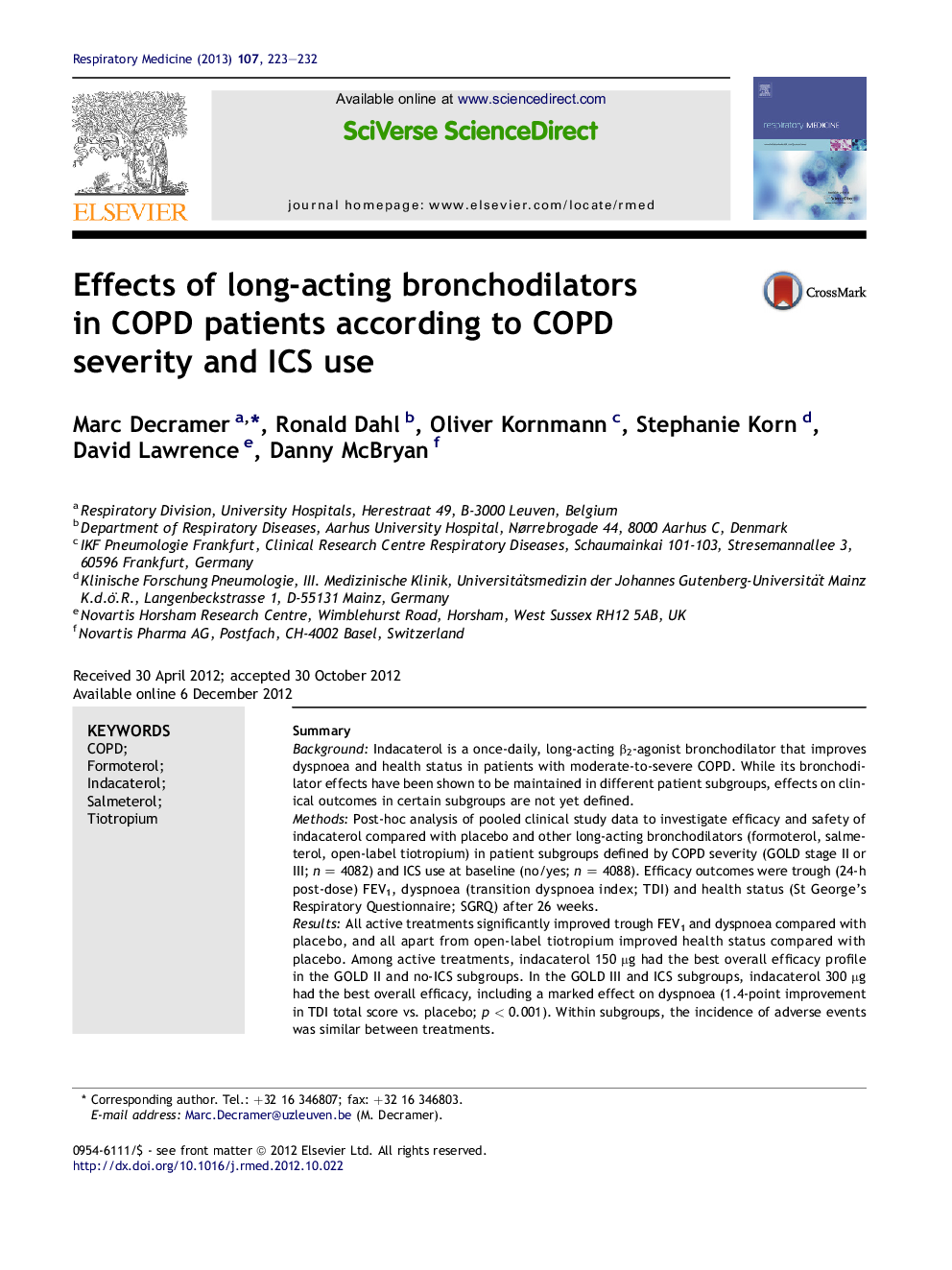| Article ID | Journal | Published Year | Pages | File Type |
|---|---|---|---|---|
| 4210684 | Respiratory Medicine | 2013 | 10 Pages |
SummaryBackgroundIndacaterol is a once-daily, long-acting β2-agonist bronchodilator that improves dyspnoea and health status in patients with moderate-to-severe COPD. While its bronchodilator effects have been shown to be maintained in different patient subgroups, effects on clinical outcomes in certain subgroups are not yet defined.MethodsPost-hoc analysis of pooled clinical study data to investigate efficacy and safety of indacaterol compared with placebo and other long-acting bronchodilators (formoterol, salmeterol, open-label tiotropium) in patient subgroups defined by COPD severity (GOLD stage II or III; n = 4082) and ICS use at baseline (no/yes; n = 4088). Efficacy outcomes were trough (24-h post-dose) FEV1, dyspnoea (transition dyspnoea index; TDI) and health status (St George's Respiratory Questionnaire; SGRQ) after 26 weeks.ResultsAll active treatments significantly improved trough FEV1 and dyspnoea compared with placebo, and all apart from open-label tiotropium improved health status compared with placebo. Among active treatments, indacaterol 150 μg had the best overall efficacy profile in the GOLD II and no-ICS subgroups. In the GOLD III and ICS subgroups, indacaterol 300 μg had the best overall efficacy, including a marked effect on dyspnoea (1.4-point improvement in TDI total score vs. placebo; p < 0.001). Within subgroups, the incidence of adverse events was similar between treatments.ConclusionIndacaterol maintained its efficacy regardless of disease severity or use of concurrent ICS. Indacaterol 150 μg had the best overall efficacy profile in the GOLD stage II patients while, in patients with more severe disease, indacaterol 300 μg provided useful improvements in dyspnoea.
